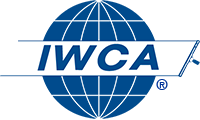June 13th at 8pm EST, we are hosting a webinar with Josh Lattimer from SendJim. He is going to give you some free tools for marketing your business. You don’t want to miss it! Sign up below!!
 Contact Login
Contact Login
- About
- Education
- Events
- Resources
- OSHA Ambassador (Previously Alliance)
- Getting Started
- IWCA Resource for the Restoration of Architectural Glass and Solar Panels
- Glass Surface Maintenance Matrix
- Technical Questions
- IWCA Podcast
- Member Directory
- Online Store
- E-newsletter Sign Up
- Toolbox Talks
- Business 101 Tools
- RDS Operator Certified Payroll Hours Submission
- Manage Your Profile
- Become a Member!
- Legacy Foundation (IWCLF)
- Jobs
Author Archive for International Window Cleaning Association – Page 10
SendJim Webinar! Sign up here! Get some Free Marketing Tools!
OSHA Response: Standard Interpretations/RDS Anchorage Testing Certification
January 25, 2019
Mr. Reg Ranahan
GSS Corporation
80 Hudson Road, Ste. 100
Canton, Massachusetts 02021
Dear Mr. Ranahan:
Thank you for your letter to the Occupational Safety and Health Administration (OSHA)[. Your letter has been referred to the Directorate of Enforcement Programs for an answer to your specific question] regarding 29 CFR 1910.27(b)(1)(i). [This letter constitutes OSHA’s interpretation only of the requirements herein, and may not be applicable to any question not delineated within your original correspondence.] Your letter requests clarification of the requirements for rope descent system anchorages under 29 CFR 1910.27(b)(1)(i). Your paraphrased question and OSHA’s response are below.
Question: International Window Cleaning Association/American National Standards Institute (IWCA/ANSI) I-14.1-2001 Section 8.1.3 requires that anchorages “be tested by applying a minimum static load of twice the design load in each (primary) direction that a load may be applied. For example, an anchorage with an ultimate capacity of 5000 pounds (2268 kg) has a four to one safety factor. Therefore the anchor’s design load is 1,250 pounds (567 kg) and it shall be tested at 2500 pounds (1134 kg).” Under 29 CFR 1910.27(b)(1)(i), must anchorages be tested at 5,000 pounds, or is it permissible to test them at 2,500 pounds, as described in IWCA/ANSI I-14.1-2001?
Response: 29 CFR 1910.27(b)(1)(i) requires that building owners inform employers, in writing, that the building owner has identified, tested, certified, and maintained each anchorage so that it is capable of supporting at least 5,000 pounds, in any direction, for each worker attached. Certification of each anchorage must be performed by a qualified person. Because the OSHA standard does not specify criteria for testing anchorages, the qualified person may utilize any scientifically-valid testing criteria to determine whether an anchorage is capable of supporting at least 5,000 pounds (2,268 kg) per attached worker. In general, this means using criteria that would be accepted by an industry consensus group, or that are certified by a registered professional engineer. OSHA would consider the testing criteria described in your letter – wherein an anchorage with a 5,000-pound ultimate capacity/strength and a four to one safety factor with a design load of 1,250 pounds is tested at 2,500 pounds – to be acceptable under 29 CFR 1910.27(b)(1)(i).
Thank you for your interest in occupational safety and health. We hope you find this information helpful. OSHA’s requirements are set by statute, standards, and regulations. Our letters of interpretation do not create new or additional requirements but rather explain these requirements and how they apply to particular circumstances. This letter constitutes OSHA’s interpretation of the requirements discussed. From time to time, letters are affected when the Agency updates a standard, a legal decision impacts a standard, or changes in technology affect the interpretation. To assure that you are using the correct information and guidance, please consult OSHA’s website at http://www.osha.gov. If you have further questions, please feel free to contact the Directorate of Enforcement Programs at (202) 693-2100.
Sincerely,
Patrick J. Kapust, Acting Director
Directorate of Enforcement Programs
https://www.osha.gov/laws-regs/standardinterpretations/2019-01-25
2019 OSHA National Safety Stand-Down

This week, as part of the 2019 National Safety Stand-Down, OSHA and the IWCA encourage employers and workers to pause in their workday to talk about fall prevention and dedicate themselves yet again to the safety of this nation’s most valuable resource: workers. For more information on the Stand-Down, visit the OSHA Stand-Down page. IWCA is happy to help in this effort with new resources for members each day.
https://www.osha.gov/StopFallsStandDown/
OSHA NATIONAL SAFETY STAND DOWN 2019 – LADDERS
Ladder safety begins with choosing the right ladder. Consider the type of work the ladder will be used for, the weight the ladder must carry, and the condition of the ladder.
Glass Waivers and the IWCA/GANA/NGA Bulletins
Jeff Klass tells us about glass waivers and the resources you get from the IWCA/GANA/NGA Bulletins.
How do you educate your customers about caring for the glass?
Opioids/Cannabis Workplace Drug Testing: What Should Employers Know?

Testing for Opioids and Cannabis in the Workplace PPT
Webinar Link
https://event.on24.com/eventRegistration/console/EventConsoleApollo.jsp?&eventid=1899622&sessionid=1&username=&partnerref=&format=fhaudio&mobile=false&flashsupportedmobiledevice=false&helpcenter=false&key=5FAB9615B9F49DA78A38444E62155831&text_language_id=en&playerwidth=1000&playerheight=650&overwritelobby=y&eventuserid=234254704&contenttype=A&mediametricsessionid=193711803&mediametricid=2674529&usercd=234254704&mode=launch
Article on OSHA and Drug Usage
https://www.fisherphillips.com/resources-newsletters-article-osha-drugs-and-rock-n-roll-a
*Members only have access to a Reasonable Suspicion Checklist inside Campus IWCA.
OSHA’s New Site-Specific Targeting Enforcement Program Webinar
Dr Duffer Explains to NGA Glass Issues – Part 2
Second part of Dr Duffer’s talk about Glass Issues at the NGA Conference.
Dr Duffer Explains to NGA Glass Issues – Part 1
First part of Dr Duffer’s talk about Glass Issues at the NGA Conference.
International Window Cleaning Association
1201 Dublin Rd Suite 136 Columbus, OH 43215 • 888.522.1905
- About
- Education
- Events
- Resources
- OSHA Ambassador (Previously Alliance)
- Getting Started
- IWCA Resource for the Restoration of Architectural Glass and Solar Panels
- Glass Surface Maintenance Matrix
- Technical Questions
- IWCA Podcast
- Member Directory
- Online Store
- E-newsletter Sign Up
- Toolbox Talks
- Business 101 Tools
- RDS Operator Certified Payroll Hours Submission
- Manage Your Profile
- Become a Member!
- Legacy Foundation (IWCLF)
- Jobs
-
Website design and hosting provided by CurrentMediaGroup.net


